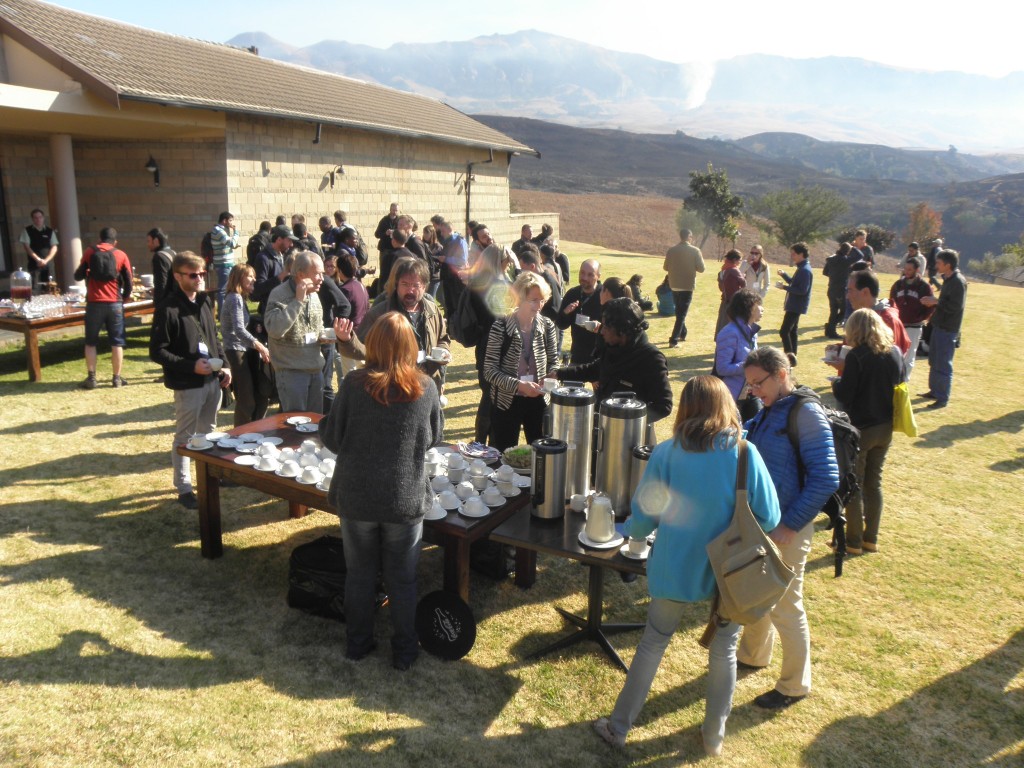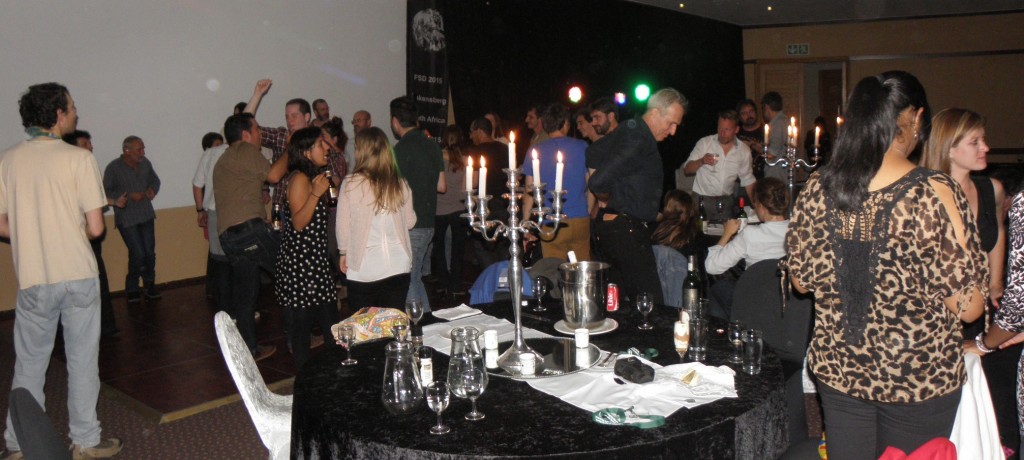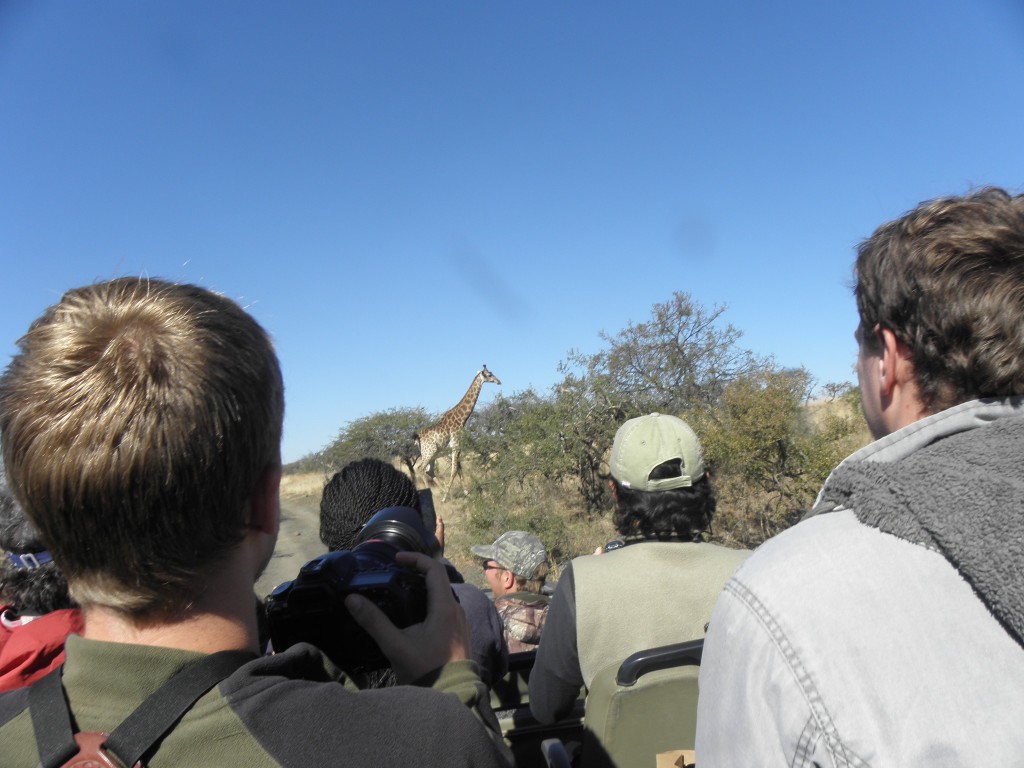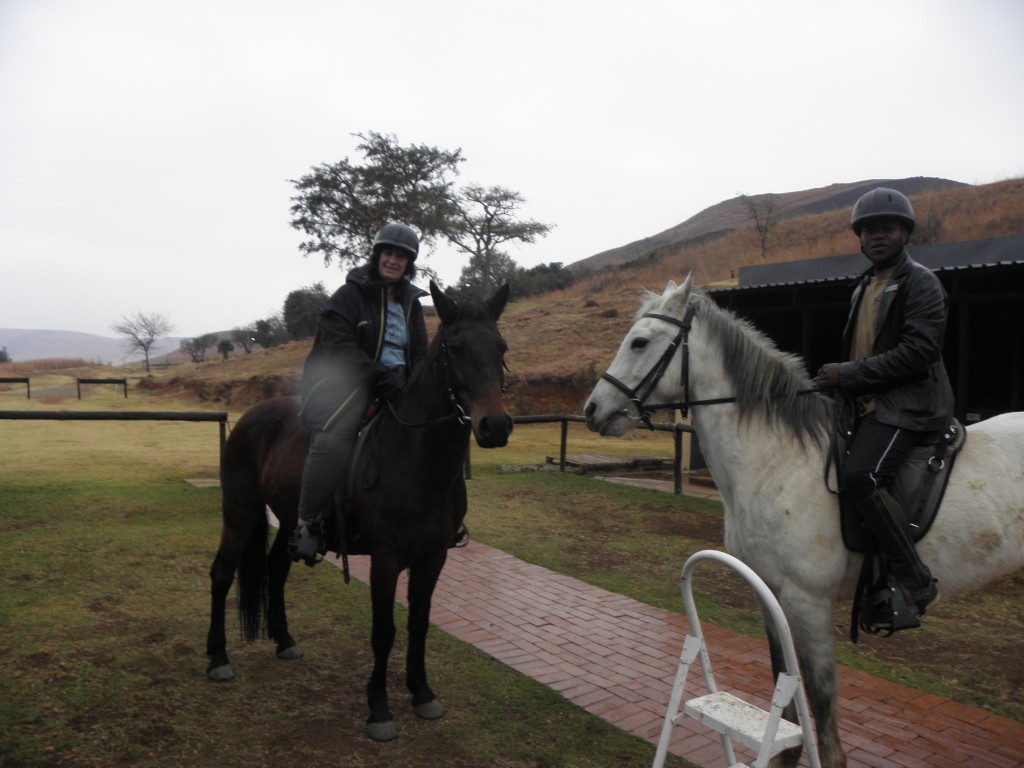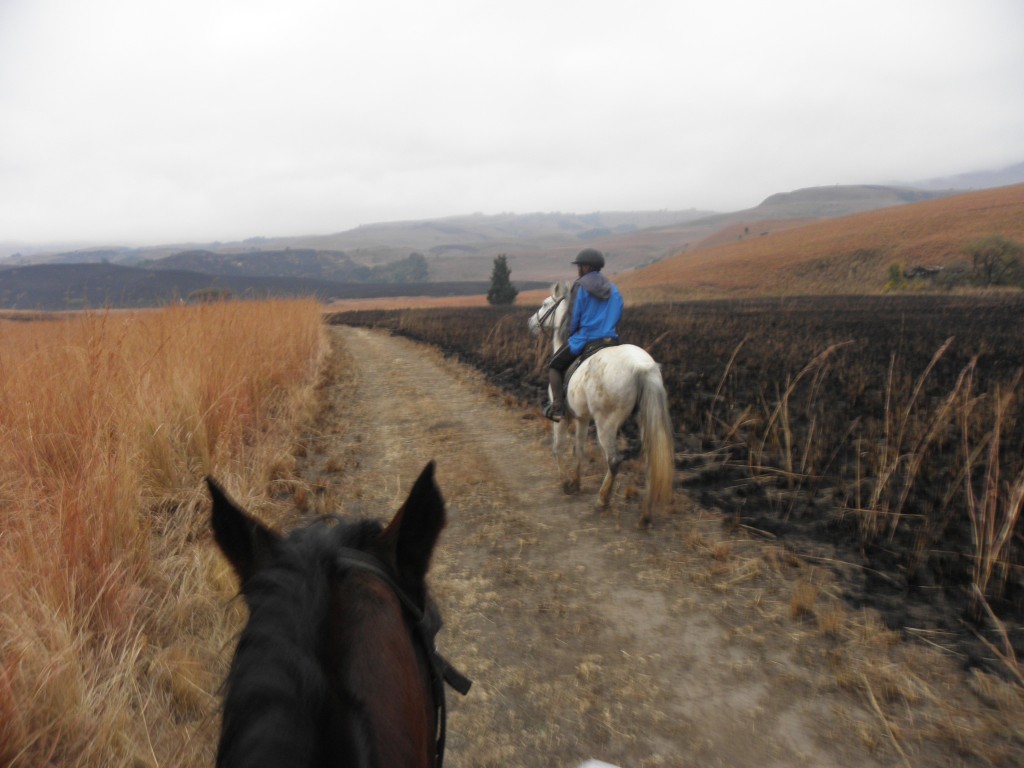After the Think Tank near Kruger NP, I had to find my way to my second conference, Frugivory and Seed Dispersal 2015, in the Drakensbergs
All went well for several hours, although I was slowed down a bit by lengthy detours from roadworks, until I left Bergville, close to sunset, and the longer I drove the less it looked like I was going the right way. Finally it was quite dark and I was driving down narrow country roads with people, goats and cows occasionally wandering along on them. I stopped to ask directions from some ladies, but we had some language problems, or perhaps they just hadn’t hard of my destination. Finally when driving through a small village I saw a shop that was open, pulled up to the door and called out to the shop attendant. He was friendly and helpful and told me I had to travel the 20 km back to Bergville and take the road out the other side. When I finally got to the right road and saw a sign pointing to Alpine Heath Resort I actually called out ‘thank you’ to it.
The Alpine Heath Resort is in a dramatic setting in the Drakensbergs.
People from all over the world presented fascinating papers over the next few days on seed dispersal by frugivores (fruit eating animals), from insects to elephants. I presented a report on some work-in-progress on what determines whether native fig seeds and seedlings germinate and persist after being dispersed by birds and bats.
There were symposia on ecology and evolution, the chemical ecology of seed dispersal, international networks, patterns and processes in frugivore-plant interactions, understanding seed dispersal, see dispersal and plant recruitment in a changing world, anthropogenic impacts on seed dispersal, seed dispersal by animals as an ecological filter, movement ecology and genetic effects, and conservation of environmental services, with many good talks presented within each.
You can download a copy of the abstracts of presentations here: http://www.fsd2015.ukzn.ac.za/images/ABJULFINAL.pdf
A mid-week fieldtrip took us to the Nambiti Game Reserve where I had my final chance to see lions, elephants, giraffes, hippos and rhinos, as well as my first hartebeest and oryx (the oryx is Namibian rather than South African, but have been released into the reserve)
After the conference I booked for a horse ride that included a wild gallop up a hill and my first view of an eland. During the conference I had also seen jackals and small antelopes at night, plus a number of birds, and heard that someone had seen secretary birds flying over. I suggested n my feedback form to the resort that they mention the wildlife in their promotion, and they have responded that they will try to fit it in to their website.
The next International Frugivory and Seed Dispersal Symposium will be held in India in 2020.



